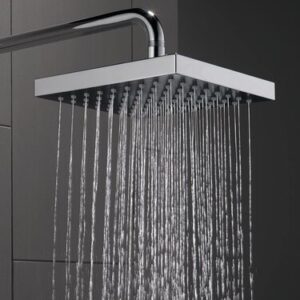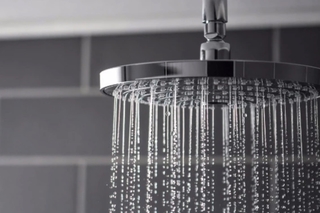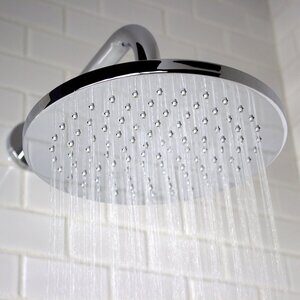Do you know how to fix a clogged rainshower head? Let’s talk about it.
A clogged rain shower head can be a frustrating problem for homeowners.
Not only does it prevent you from enjoying a relaxing shower, but it can also lead to
- low water pressure,
- water wastage, and
- even damage to your plumbing system.
Fortunately, fixing a clogged rain shower head is not as complicated as it may seem.
Let’s examine some tips and tricks on how to fix a clogged rainshower head, and restore your bathroom to its former glory.
What Causes a Clogged Rain Shower Head?

Some of the most common culprits are:
- Hard water: Hard water contains minerals that can build up inside your shower head over time, leading to clogs and reduced water flow.
- Soap scum and dirt: They can accumulate, causing clogs and reducing the water pressure.
- Rust and corrosion: It builds up inside your shower head, leading to reduced water flow.
- Foreign objects: Sometimes, foreign objects such as hair, small toys, or even insects can get stuck in your shower head.
Now that you know what causes a clogged rain shower head, let’s explore some ways to fix it.
Clean the Shower Head
The easiest and most common way to fix a clogged rain shower head is to clean it.
- Remove the shower head: Most shower heads can be easily removed by twisting them counterclockwise.
- Soak the shower head in vinegar: Fill a plastic bag with vinegar and place the shower head inside. Make sure the shower head is fully submerged in the vinegar and leave it to soak for at least an hour.
- Scrub the shower head: After soaking, remove the shower head from the vinegar and use a soft-bristled brush to scrub away any remaining buildup or debris. Pay attention to the nozzles and make sure they are clear of any blockages.
- Reattach the shower head: Once you’re done cleaning, reattach the shower head to the pipe and test the water flow. If the problem persists, try the next solution.
Use a Plunger
If cleaning the shower head doesn’t work, try using a plunger to force water through the nozzles and dislodge any clogs.
- Remove the shower head: As before, remove the shower head by twisting it counterclockwise.
- Cover the nozzles: Cover the nozzles with a wet cloth or duct tape to create a seal.
- Use a plunger: Place the plunger over the end of the shower head and pump it up and down vigorously for a few minutes. This should create suction that dislodges any clogs in the shower head.
- Reattach the shower head: Once you’re done, reattach the shower head to the pipe and test the water flow.
Check the Water Pressure
Sometimes, a clogged rain shower head may be caused by low water pressure.
- Check other faucets: Check if the water pressure is low in other faucets in your home. If it is, the problem may be with your plumbing system and you may need to call a professional plumber.
- Remove the flow restrictor: If water pressure is low only in your rain shower head, it may be due to a flow restrictor. These are small devices that help conserve water.
If you suspect that a flow restrictor is causing low water pressure, you can remove it by doing this:
- Remove the shower head: by twisting it counterclockwise.
- Locate the flow restrictor: It’s a small plastic or metal disk inside the shower head.
- Remove the flow restrictor: Use a flathead screwdriver or pliers to gently pry the flow restrictor out of the shower head.
- Reattach the shower head: Once you’ve removed the flow restrictor, reattach the shower head to the pipe and test the water flow. You should notice an improvement in the water pressure.
Replace the Shower Head
If none of the above solutions work, you may need to replace your rain shower head.
Over time, shower heads can become worn out and damaged, leading to clogs and reduced water flow.
How to choose a new rainshower head?
- Look for a high-quality shower head: Invest in a shower head made from high-quality materials, such as stainless steel or brass. These materials are more durable and less likely to clog than plastic shower heads.
- Consider the water flow rate: Look for a shower head with a water flow rate of 2.5 gallons per minute (GPM) or less. This is the maximum flow rate allowed by federal law and will help you conserve water and save money on your water bill.
- Choose a style that suits your bathroom: Rain shower heads come in a variety of styles, including wall-mounted, ceiling-mounted, and handheld. Choose a style that fits the design and layout of your bathroom.
So as we’ve seen, a clogged rain shower head can be a frustrating problem.
But it’s easily resolved with a little effort. When you know how to fix a clogged rainshower head, you’ll soon be back to enjoying a relaxing shower again.

